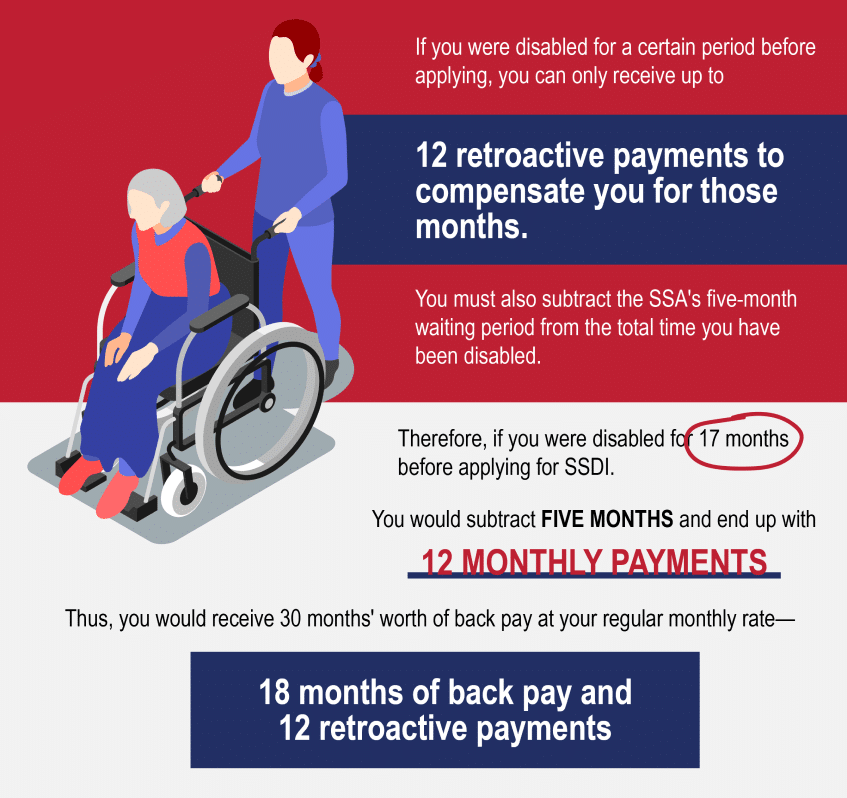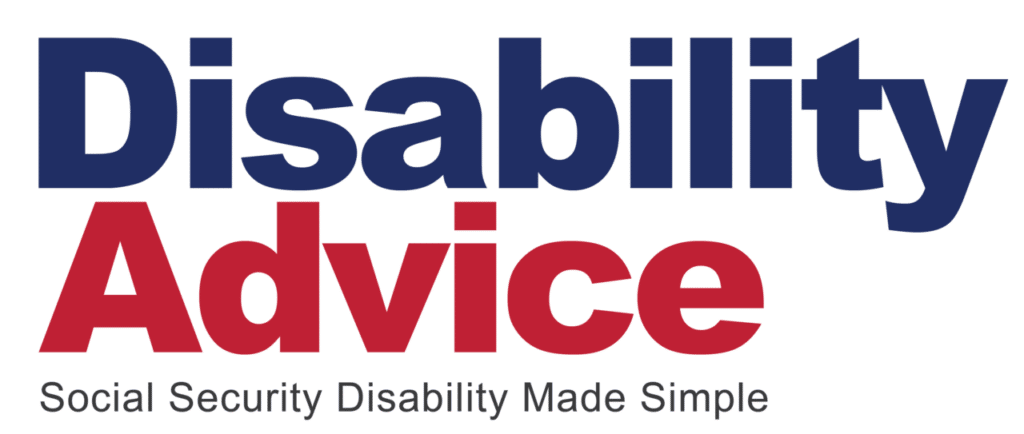SSDI Back Pay
If you cannot work due to a disability, making up for your loss in income is an immediate priority. Most people know their disability may make them eligible for monthly Social Security Disability Insurance, or SSDI, benefits checks. However, many aren’t aware they may also be eligible to receive a lump sum of SSDI back pay dating back to the date they applied for benefits— or even as far back as their diagnosis date.
- SSDI back pay compensates for the months a person was eligible for benefits but did not receive payments due to application processing delays.
- The amount of SSDI back pay is calculated based on the application date, disability onset date, and the five-month waiting period.
- Retroactive SSDI payments can include up to 12 months prior to the application date if eligibility criteria are met.
- Receiving back pay often involves a lump sum payment, which can significantly help with financial stability for those waiting on SSDI benefits.
If you meet the criteria for SSDI approval, you’re likely also entitled to SSDI back pay. A disability attorney can help you understand your rights and advocate for you to receive every penny you’re owed in SSDI benefits.
What Is SSDI Back Pay?
Back pay is a combined amount of monthly SSDI benefits—issued as a lump sum—to compensate you for the time you spent waiting for your SSDI application to be approved. Most SSDI applicants struggle with finances while waiting for benefits due to their inability to work. Back pay is intended to make up for the lost benefits.
Back pay is paid at your standard monthly benefits rate, covering the period from when you first applied for SSDI up to your approval date. This period has no time limit, and you could receive back pay for years’ worth of benefits if your application process took a long time.
You can also receive back pay for up to 12 months of benefits if you show that your disabling condition existed before you filed your application. These back benefits, called retroactive payments, compensate you for the period when you would have been eligible for SSDI benefits but had not yet applied for them. This period begins on the established onset date, or EOD, of your disability.
How Do I Determine My Onset Date?
Several factors go into determining your EOD, especially if your disabling condition did not result from a single incident but rather developed gradually, with symptoms emerging over time. Common dates used by SSDI applicants to determine their onset date include the diagnosis date, a hospitalization date, or the day they stopped working.
The onset date submitted by an applicant is called the alleged onset date, or AOD. When the SSA determines that the AOD is accurate or finds that a different date is correct, that date becomes the EOD.
How Far Back Can Back Pay Go?
Back pay between the date of application and the approval date is functionally unlimited. You can receive back pay for as many months as it took the SSA to approve your application after you filed it.
However, you can only receive up to 12 months of retroactive payments dating back to your EOD, no matter how long you were disabled before applying for benefits. If you became disabled in January of 2023 but applied for benefits for the first time in January 2025, you could not receive retroactive payments for time before January 2024.
Additionally, back pay doesn’t always reach the 12-month maximum, even if you were disabled for 12 months or more before you applied. The SSA has a five-month waiting period between your EOD and when you become eligible for SSDI benefits. This period is designed to prove that your disability is persistent and truly prevents you from working. Therefore, if you became disabled in January 2024 but did not apply for benefits until January 2025, you could only receive retroactive benefits dating back to June 2024 because you were not eligible for SSDI for the year’s first five months.
How Is SSDI Back Pay Calculated?
To determine the amount of your SSDI back pay, you must consider the amount of time since your application and the amount of time since you originally became disabled.
The amount of time since you filed your application is considered in full, with no subtractions. If it took 18 months for your application to be approved, you’ll receive 18 months’ worth of monthly payments for that time.
However, if you were disabled for a certain period before applying, you can only receive up to 12 retroactive payments to compensate you for those months. You must also subtract the SSA’s five-month waiting period from the total time you have been disabled.
Therefore, if you were disabled for 17 months before applying for SSDI, you would subtract five months and end up with 12 monthly payments. Thus, you would receive 30 months’ worth of back pay at your regular monthly rate—18 months of back pay and 12 retroactive payments.
Your SSDI monthly payment amount is calculated based on your earnings and other circumstances. To estimate your monthly payment, check out the SSDI calculator tool.

How Long Does It Take To Receive SSDI Back Pay?
The time it takes to receive SSDI back pay varies based on the circumstances of your case. It typically takes roughly three to six months for your SSDI application to be approved. After you receive the approval.
You will receive the back pay as a lump sum on your first check.
What Is the Difference Between SSDI Back Pay and SSI Back Pay?
SSI back pay works similarly to SSDI back pay in that SSI beneficiaries are eligible for back pay from their application date to the date of approval. However, unlike SSDI recipients, SSI recipients are not eligible to receive back pay dating back to the onset of their disability. They can only receive back pay for the application period.
Does Back Pay Get Taxed?
SSDI back pay lump sums are taxed according to the same rules as standard monthly SSDI payments. Thus, your SSDI back pay may be taxable, depending on your income.
If you earn less than $25,000 annually and are single, married filing separately, the head of household, or a qualifying widow or widower, your SSDI benefits are not subject to tax. This threshold increases to $32,000 if you are married filing jointly. These rules apply to both back pay and monthly payments.
If you earn more than these amounts, your SSDI benefits are taxed at either 50 percent or 85 percent, depending on your income. Your back pay is taxed at the same rate. However, if you receive a lump sum of back pay, you must declare the entire sum in the year you received it.
You cannot amend a previous tax return to reflect back pay, even if part of the lump sum technically applies to the previous year. The IRS does allow you to make tax calculations using the previous year’s income, which may decrease your liability if your previous income was lower.
You can calculate your benefits tax liability using the steps listed on our website.
Disability Advice Can Help Maximize Your Back Pay
In the confusion of applying for benefits and waiting for approval, it can be difficult to determine all the benefits you’re owed. Disability Advice can connect you with a skilled disability attorney who can advocate for you to get the compensation you deserve.
Whether you’re applying for the first time or appealing a previous denial, you have options—and you might be owed more money than you think. Disability Advice is here to help.
Contact us today to see if we can help today.
- Free case evaluation
- Assist with denied claims
- Ensure you have all documents
- Make the process easy for you
Fill in the form below and let us know how we can help you!
"*" indicates required fields

